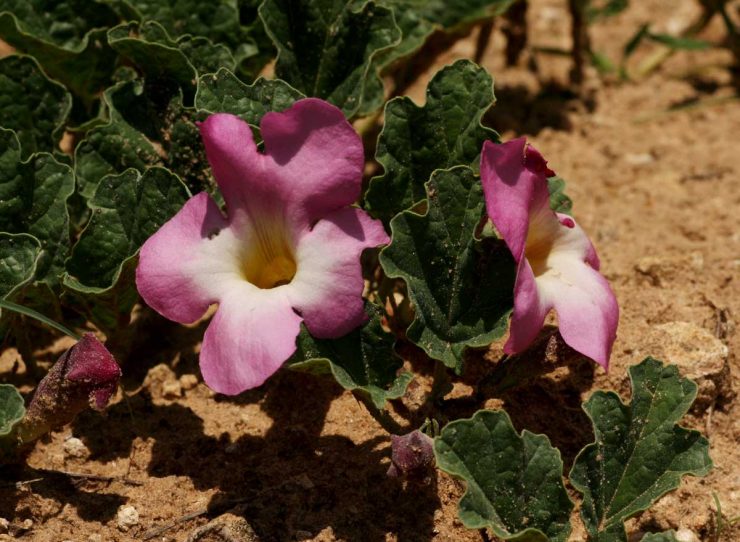Devil’s claw is native to South Africa, in particular; Namibia, Botswana and the Kalahari region where the root has long been used to treat pain, fever and digestive complaints.
HISTORY
It was first introduced to Europe in the early part of the 20th century where it was commonly used a digestive aid and drunk as a tea. After the First World War, further investigations recommended its use as an anti-inflammatory. Its botanical name Harpagophytum means hook plant in Greek. It gets this name owing to the appearance of the fruits, which are covered in hooks that attach to passing animals so as to spread its seeds.
Today, devils claw is considered to be one of the best herbs for helping to treat back pain and osteoarthritis. It is not entirely understood how it works although studies have shown that extracts of the herb block certain pathways in the body, which cause joint inflammation. Devils claw’s main active constituent is an iridoid glycoside known as harpagoside and it is this constituent, which has a strong anti-inflammatory action.
USES
BACK PAIN
A study published in the Journal of Rheumatology showed that devil’s claw was as effective as non-steroidal anti-inflammatory drugs (NSAIDS), such as ibuprofen in reducing the symptoms of back pain. In fact, The German Commission (a government regulatory agency) has approved devils claw for use in rheumatic and arthritic conditions. Devil’s claws benefits aren’t just limited to back pain, studies have also shown that it can help hip and knee problems.
OSTEOARTHRITIS
Several studies have shown that taking devils claw for two to three months significantly reduced arthritic pain and improved mobility. One study showed it to be equal to if not more effective than the commonly prescribed drug Diacerein for managing the pain and inflammation of osteoarthritis and it was also shown to be a safer option in terms of side effects. Many people who regularly take devils claw report less need to use standard anti-inflammatory drugs while others claim they no longer need them at all.
OTHER USES
Traditionally, devils claw was made into a cream or ointment and applied to skin problems such as ulcers and boils to help reduce pain and inflammation. It may be taken as a tea for sluggish digestion and bowels, as its bitter taste is thought to stimulate digestive juices and liver function.
It is not just humans who can benefit from this wonderful herb; some vets recommend it for treating arthritis in dogs. It is even known in the horse racing world; the British Horse Racing Authority accept it as a remedy for injured horses although it is prohibited for use 24 hours before a horse enters a competitive race.
HOW TO TAKE IT
Devils claw is available in tablet, capsule and tincture form. It is also used as an ingredient in gels and creams for external use. Dosage recommendations vary depending on the supplier. According to Arthritis Research UK, 500mg-1500mg of the dried root extract can be taken up to three times a day. Try taking it alongside other natural anti-inflammatory herbs such as ginger or turmeric.
WATCHPOINTS
- The most common side effect is diarrhoea although this doesn’t affect everyone who uses it
- As devils claw can stimulate the production of stomach acid, extra care should be taken by people with peptic ulcers and gastritis
- It should be avoided by those suffering from gallstones
- It should not be used in pregnancy
- Devils claw interacts with warfarin and ticlopidine and should be avoided if you are taking these medications























